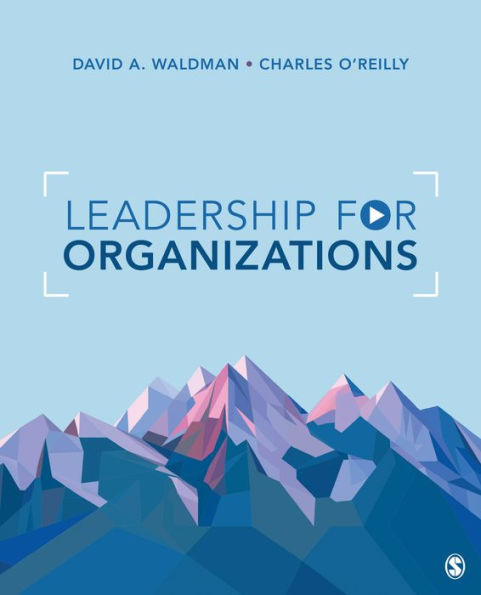Leadership for Organizations / Edition 1 available in Paperback, eBook

Leadership for Organizations / Edition 1
- ISBN-10:
- 1544332726
- ISBN-13:
- 9781544332727
- Pub. Date:
- 01/23/2019
- Publisher:
- SAGE Publications
- ISBN-10:
- 1544332726
- ISBN-13:
- 9781544332727
- Pub. Date:
- 01/23/2019
- Publisher:
- SAGE Publications

Leadership for Organizations / Edition 1
Buy New
$129.00Buy Used
$66.10-
-
SHIP THIS ITEM
Temporarily Out of Stock Online
Please check back later for updated availability.
-
Overview

Product Details
| ISBN-13: | 9781544332727 |
|---|---|
| Publisher: | SAGE Publications |
| Publication date: | 01/23/2019 |
| Edition description: | First Edition |
| Pages: | 256 |
| Product dimensions: | 7.38(w) x 9.12(h) x (d) |
About the Author
Charles O’Reilly B.S. (Chemistry), University of Texas at El Paso; M.B.A. (Information Systems), Ph.D. (Organizational Behavior) University of California at Berkeley (Frank E. Buck Professor of Management). He has taught at UCLA, Berkeley, and been a visiting professor at the Harvard Business School. His teaching has concentrated on strategy, leadership, and the management of human resources. He has won teaching awards at Berkeley and Stanford and recently received both a Lifetime Achievement Award and the Distinguished Scholarly Contribution Award from the Academy of Management. Charles’ research focuses on leadership, innovation, and organizational culture and change. He has also developed and served as faculty director of several Executive Education programs, including Leading Change and Organizational Renewal and The Human Resources Executive Program. He has consulted widely with firms in the U.S., Europe, and Asia. Charles has published more than 100 articles and several books. His most recent research focuses on organizational culture, the impact of senior management on innovation and change. His latest book, Lead and Disrupt: How to Solve the Innovator’s Dilemma (Stanford University
Press, 2016), explores why successful firms sometimes fail—and what it takes for leaders to help their organizations survive and prosper over long time periods. He is a Fellow of the American Psychological Society and American Psychological Association, as well as a member of the Academy of Management.
